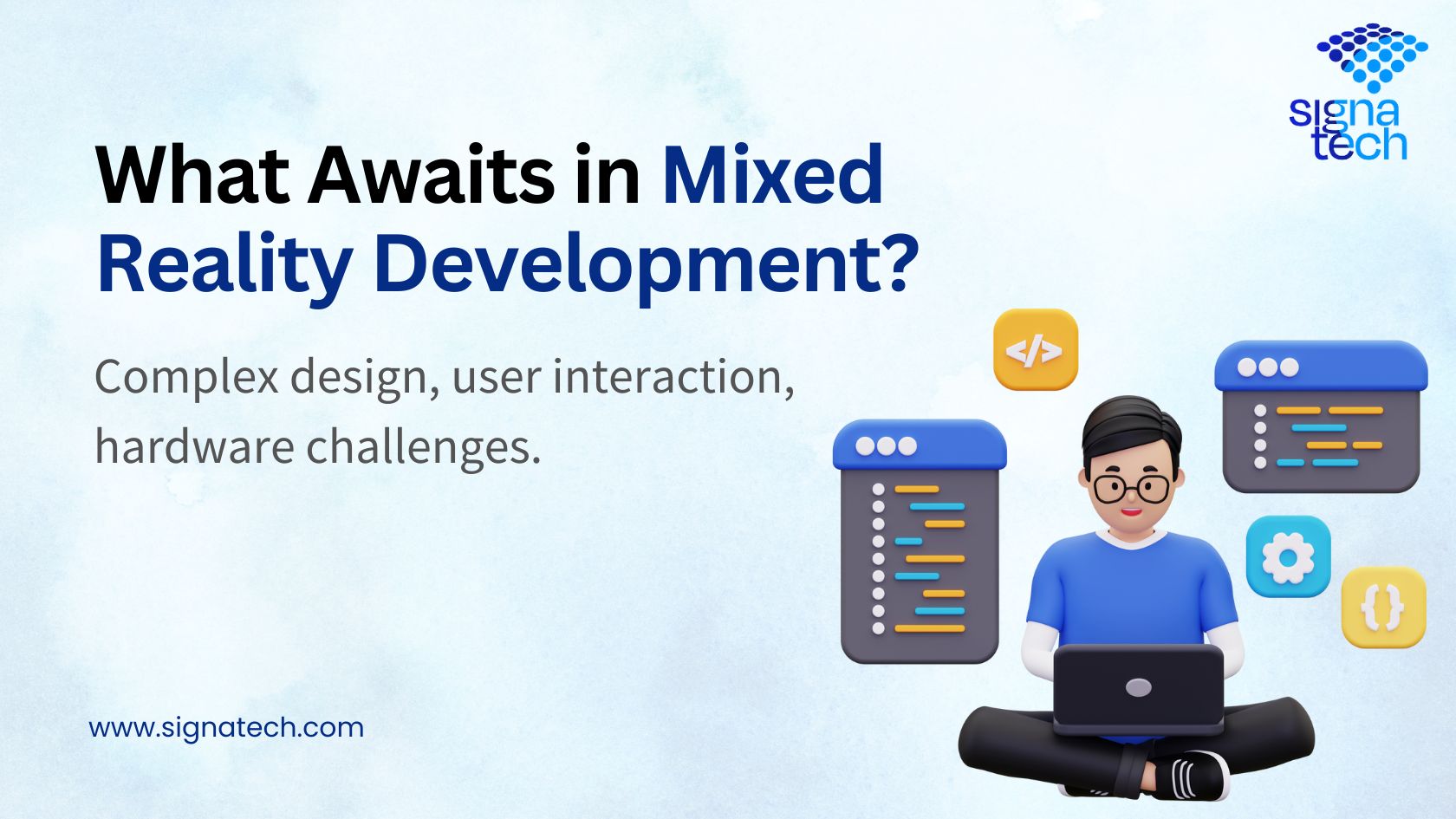Mixed Reality Software Development is a relatively new and rapidly growing subfield of technology that focuses on the integration of digital and physical environments, which has already started to revolutionize such spheres as education or healthcare. However, the opportunities are enormous but mixed reality development is not without its challenges, which may range from technical to user interface and interaction challenges. This extensive analysis examines the challenges and opportunities of creating mixed reality settings, based on Signa Tech’s expertise in custom software solutions.
The Challenges of Mixed Reality Software Development
Creating software for mixed reality (MR) is a complex process that can present various difficulties to the developers. One of the main challenges is that coding for mixed reality is quite complex. This kind of programming requires knowledge of spatial computing, 3D modeling, and UI design that would allow for a smooth integration of the real and the virtual.
MR software engineering also has many difficulties because of the variety of hardware. Application developers have to make sure that their applications are compatible with different devices ranging from the latest VR headset to the simplest AR-enabled smartphone. This means that there must be a strong development approach to sustain the performance and functionality of the application which can be quite challenging.
Furthermore, the issue of having mixed reality features such as motion tracking and environment scanning can pose some challenges in development. These technologies need to be fine tuned and tested to the point where the digital content is in harmony with the physical environment which is a key factor in a successful Mixed Reality.
Opportunities in Mixed Reality Application Development
However, mixed reality software development has many opportunities: In fields like education, MR applications can completely change the approach that is used in teaching. Students can easily understand concepts such as astronomy or human anatomy through the use of simulations that make learning easier and fun.
In the health care sector, MR applications can be useful in the training of surgeons and other health care personnel since they can simulate real life models and practice on them without having to use real models. This technology not only enhances the access to medical training but also does it in a safer and less costly manner.
Retail is another industry where the development of mixed reality applications can build new experiences for customers, for instance, virtual fitting or 3D visualization of products. These applications can greatly improve customer satisfaction and increase sales, which is beneficial for retailers.
The Best Practices for Mixed Reality Development
The following are some of the best practices that should be followed when developing mixed reality software. One of the most important practices is the focus on the user. The design should be made in such a way that the user is not overwhelmed by the application but rather the application makes the user’s interaction with it easier.
Another important practice is the optimization of applications for a large number of devices. When it comes to mixed reality application development, the different environments that the user is likely to be in and the different hardware that the user is likely to be using should be taken into consideration to make the application as accessible and as performant as possible.
Furthermore, one can use other sources like mixed reality development guides and attend mixed reality developer webinars that can give important information and the most recent knowledge necessary for successful work in this rapidly developing sphere. Signa Tech, which specializes in custom software development, also offers tools and assistance for developers who undertake these projects.
Engaging with the Mixed Reality Development Community
For those who are new to mixed reality software development, it is always helpful to interact with the other developers. Web-sites that demonstrate cases of mixed reality applications and boards where developers discuss the difficulties they faced during mixed reality development can provide novices with useful tips and ideas.
Moreover, developers should look at the possibilities of mixed reality apps by investigating different AR development and VR development undertakings. This exploration not only widens the horizon of a developer but also improves the creativity of the developer in his/her projects.
Mixed Reality Software Development is at the frontier of technology, it allows developers to create applications that revolutionize the way we interact with the physical world. The issues are not trivial, including development environments, hardware variations, and more, but the potential for creating something new and improving people’s lives is limitless.
These challenges are not insurmountable, and by adhering to best practices, utilizing available resources, and collaborating with the community, developers can successfully overcome these hurdles and fully realize the potential of this promising field. With the advancement of MR technology, the methods of developing such wonderful experiences will also improve, and therefore the future is bright for both the creators and the consumers of mixed reality technologies. Signa Tech, therefore, continues to be a reliable ally in this process, offering customized services in custom software development to creators in the sector.
